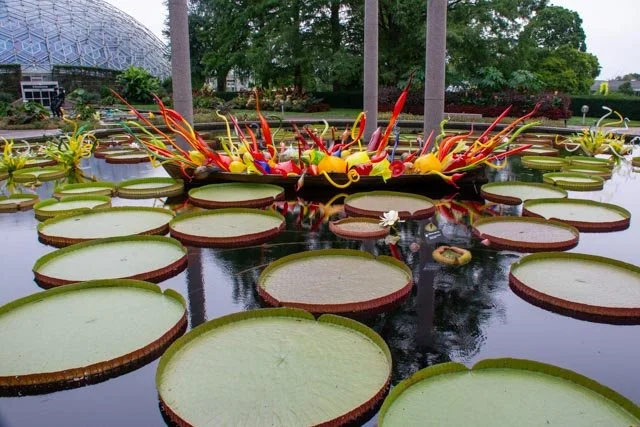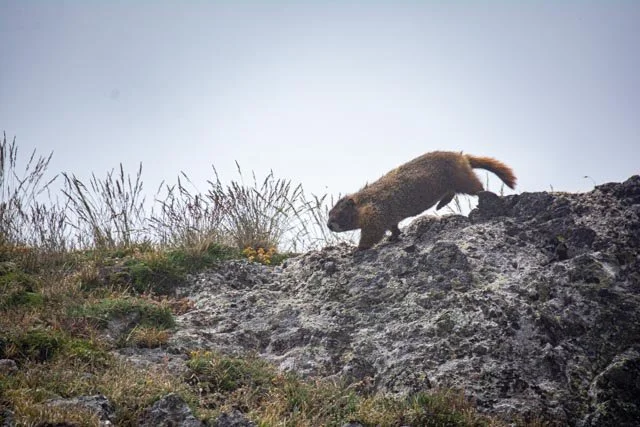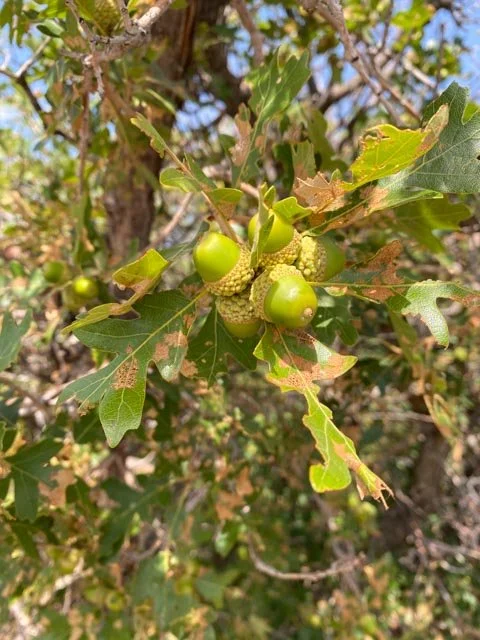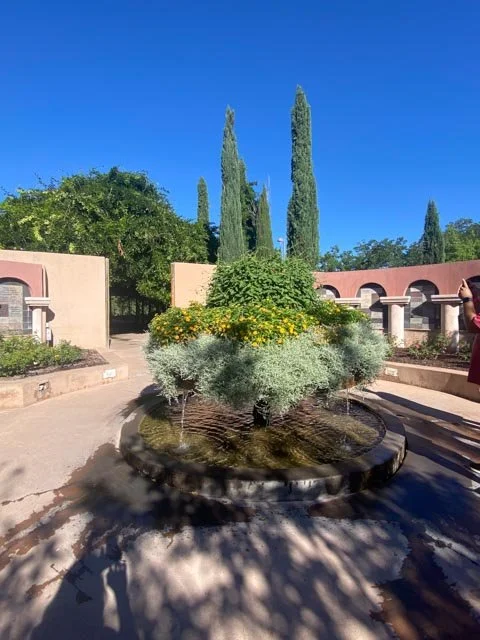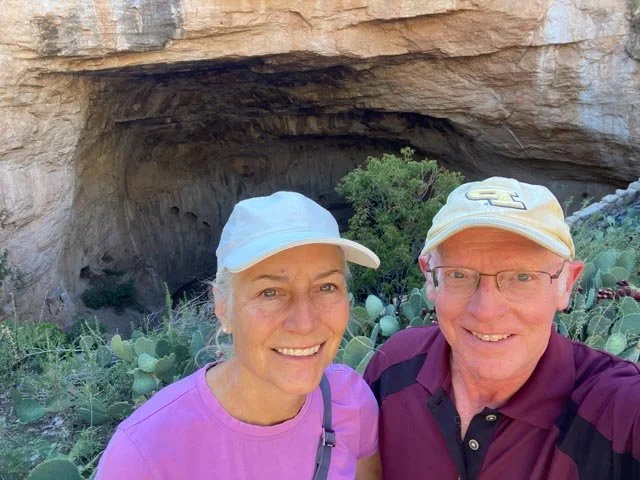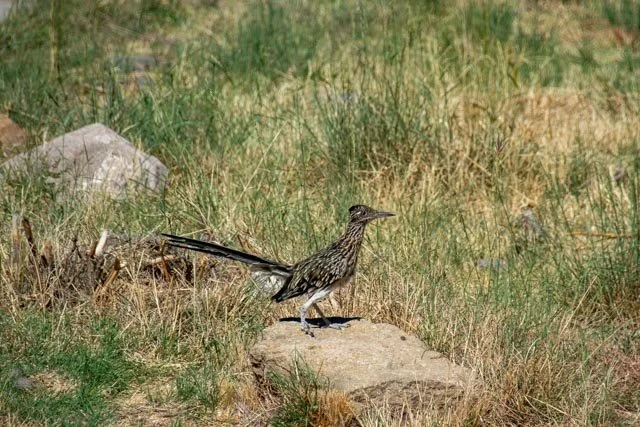Aug 12
First stop on our National Park trip was . . . .St. Louis. Missouri Botanical Garden was gorgeous. The Gateway Arch with its museum were interesting and view from the top was awesome.
Aug 10 :
Since it is such a long way from St. Louise to the Rocky Mountains we stopped for the night at Shiloh Vineyard & Winery near Wakeeney, Kansas. Interesting place where the farm has been turned into a Vineyard with a nice winery and a place for wayward RV’ers to stop with the proper reservations. Although it was a challenge to find given almost all the back roads in Kansas seem to be gravel/dirt and GPS does not even know what roads go straight through to the next road and which ones don’t. Found the winery in time for wine and cheese and a nice sunset.
Aug 12-15:
We just left one of America’s treasures, Rocky Mountain National Park. One of the things we love to watch are the animals in their homes, be it large moose and elk or small marmots, ground squirrels and birds. Some we were up early to see and some met us as we hiked. A herd of elk even arrived at our campground to enjoy the bushes for dinner!
There are lots of opportunities to experience the tundra at Rocky Mountain National Park. Above 11,000 feet the conditions are so extreme that plants are 6 inches tall or less. The plants and insects are tiny, tenacious and awesome! And the views are spectacular.
Last post from Rocky Mountain National Park. Some of the beautiful scenery we experienced. Only hike that made me question my sanity (this week) was climbing up the rocks beside the waterfall. That’s where the trail went, really. There was a beautiful emerald lake beyond.
Aug 16-17:
On our way to the next national Park we stopped one more time in Colorado at Colorado Springs to visit the Garden of the Gods and Pikes Peak(and the small town of Manitou Springs at the base of Pikes Peak). We had been to both before many, many years ago and although neither are national parks, they are some very unique places. Also, as an unplanned side trip we went to “Florissant, Colorado” where there is a large area of petrified tree stumps. Again and interesting find and amazing to think about how the landscape has changed over the millennia.
Aug 18-22
Have spent the last week in western Colorado where cell and Wi-Fi are pretty nonexistent and landscape is spectacular. This is the Great Sand Dunes National Park. We old folks made it to the top of 700 foot Great Dune”. No trails, we are told to walk where we wish. Found a woman having wedding pictures taken when we made it to the top and kids sand boarding back down! We just rested, drank lots of water and enjoyed easy walk back down. Did do a bit of sled riding just because.
Black Canyons of Gunnison National Park. Lots of hiking and breathtaking views on ridges as most of canyon is only accessible by rock climbing. Not something these only bodies will do.
Some comments about the night sky out here on our Colorado trip. This is the first time we have actually seen the Milky Way. Have seen pictures but never the real thing. Nights have been clear at both Great Dunes and at Black Canyon. This was one of my attempts to take a star picture but it does not really capture how amazing seeing Milky Way is. At first you think it is just clouds. Then you realize that it is all stars.
Aug 23-24:
Mesa Verde National Park and world heritage site. We were so fortunate to be able to spend time in this sacred ancient Pueblo site learning about the culture of a very advanced society that lived in southern Colorado 800—1500 years ago. The guides made sure we knew how these people respected and helped everyone and the land and treated both much better than we often do. We were able to go into two cliff villages and see up close how they lived as well as see how those who lived in homes on regular flat ground on the Mesa lived.
Mesa Verde National Park. Dean said he would post these if I didn’t.😁 In order to get into a cliff dwelling, the ranger made it quite clear that if you were afraid of heights, climbing ladders, walking narrow cliffs or squeezing through tight places that a tour through a cliff dwelling was not for you. Once you start down the ladder and paths, you are committed. At least we didn’t have to use the hand and foot holds that the native Americans carved into the cliffs to climb down the cliff!
Aug 25-26
On our way to the Petrified Forest National Park, we went through the “four corners” region where four states come together. This is the only place in the US where four states (Utah, Colorado, Arizona and New Mexico) share a common corner.
Petrified Forest National Park, a little visited park. Once a rain forest, it is now a desert filled with more petrified wood than you can imagine. The badlands dunes spit out more fossils and petrified wood as they erode. Much of it resembles logs that have been “cut” into chunks. No one actually cut them. The quartz that has replaced the wood fibers tend to crack along the shortest distance (perpendicular to the length), like a piece of chalk.
The Petrified Forest NP is a small park that you can easily walk every trail and take in all the fossils, history, petroglyphs and geology in 2 days. This includes touring the area that is the Painted Desert with its historic inn and time to enjoy an ice cream cone at that inn. And of course you cannot forget to visit part of the famous route 66. Unfortunately the only part of the route 66 left here is a line of telephone poles out in the desert.
Aug 27-29
We took a break from visiting national parks for a couple of days and visited Albuquerque and Santa Fe. Spend some time visiting with Dean’s cousin’s wife, Nina. The sad news was that Bruce had passed away about 7 months before our visit. Great to see Nina after many years and also tour the area of Cochiti Lake. Spent some time in “Old Town” of Albuquerque and the Albuquerque Botanical Park. When up the tram ride Sandia Peak and took a short hike around the top. Spent a day touring and shopping in Santa Fe as well. Now on with the national parks.
Aug 30-31:
Snow covered roads in southern New Mexico? Nope. White Sands National Park, the largest gypsum dune field in the world. It is hot here but the sand is cool and feels great on your feet. We found it a great place to spend mornings and evenings. Afternoons are best enjoyed in air conditioning.
Super blue moon and sunset over white dunes.
The National Park is next to the White Sands Missile Test Range and when you hike some of the trails in the NP there are some warning signs that you need to pay attention to. Dean could not resist not visiting the White Sands Missile Range Museum. Took a little security check and you were allowed to only walk from the gate to the museum. Interesting signs are along the road that you want to pay attention to.
Sept 2-5
Carlsbad Caverns National Park has some of the most magnificent and magical looking mineral formations. And it is 56 degrees, half the temperature that it is outside the cave in the desert here. We spent two full days in the cave taking many of the trails twice as there is way more to see than our brains could take in with one trip.
Guadalupe Mountains National Park is part of the same mountain range as Carlsbad Caverns but it is officially in Texas and the caverns are in New Mexico. These parks were a two for one place to camp. This is the park where you experience the high desert. Mostly, it is rocky with half of the plants dead or struggling due to a couple of years of drought. But we found 6 springs which are the water sources for people and animals. Each spring had a little oasis around it that you really appreciate after walking miles in the rock and sand. Even as dry as it is little animals, insects and flowers would surprise us. They must be very strong and tenacious to adapt to this environment. And, yes it is every bit as hot as the news have been saying. We have been hiking early and bringing twice the water.
Sep 6-7
Big Bend National Park. One of the least visited National Parks. It is called a green island in the desert. The Rio Grande River provides the water. This park sits on the USA/ Mexico border. You can walk across the river in places which a herd of cattle did one night to enjoy the grass at our campground until the Spanish speaking cowboys corralled them and took them back home. Can’t blame the cattle. It was probably the only green grass within hundreds of miles. We saw lots of animals including weasel, coyote, roadrunner, jackrabbit, bats, vultures, lizards, huge millipedes…One suggestion. Visit November- May. It got up to 110 every day and all trails were shut down at noon for our safety. Average highs in September are 85-90 so it is way above average.
Big Bend is farther from civilization than anywhere we have been in US. It claims to have the darkest skies in the US national parks. Not sure if it does, but the skies were amazing. We spent each evening sitting outside staring up. Dean tested his camera to take some photos.
And Dean had to check out some of the “off road” trails. This one was a little more challenging than expected. We got to the old hot springs area on the Rio Grand that had been used as a spa many many years ago. But getting there ……. wow!
Sept 9:
Time to head back to Ohio but on our way back we made a stop at Ft Worth, Texas. We went down to the Stockyards National Historic District and watched the demonstration of the Texas long horn cattle drive through the streets, checked out the surprisingly interesting Stockyards Museum and of course saw the traditional gun fight demo . Made a quick visit to the down town area of Ft. Worth and then spent the evening at our first rodeo.
Sep 10-11
Hot Springs National Park. Our last park is the second smallest NP. Great place to hike through well-established forest and enjoy the wild history of the rich and famous and infamous. The springs are still hot and drinkable, you can be pampered at the spa’s, Victorian architecture is pretty and the old speakeasy’s are now good restaurants.
An interesting fact about the hot springs here is that they do not have the “rotten egg” smell such as hot springs at Yellowstone. These hot springs are warmed over thousands of years as they travel alone what is known as a geothermal gradient. The average flow from the 54 measured springs is just under 700,000 galls per day with an average temperature in January of 131 deg F.
Interesting area, however we are looking forward to getting home tomorrow.















